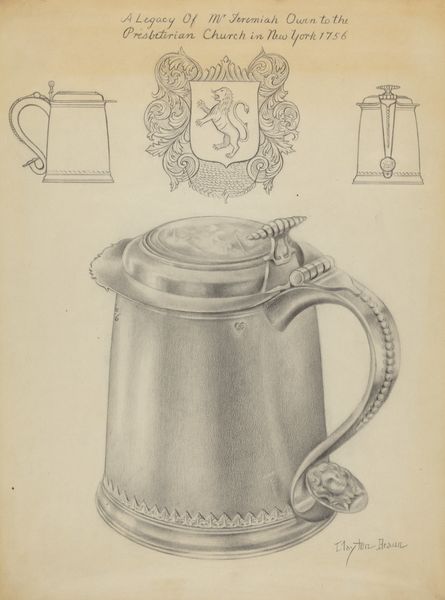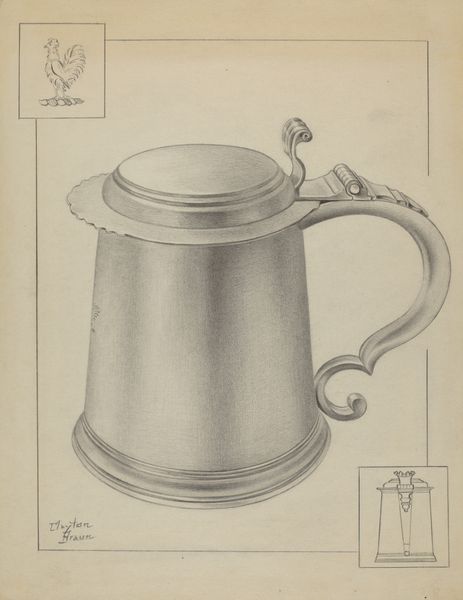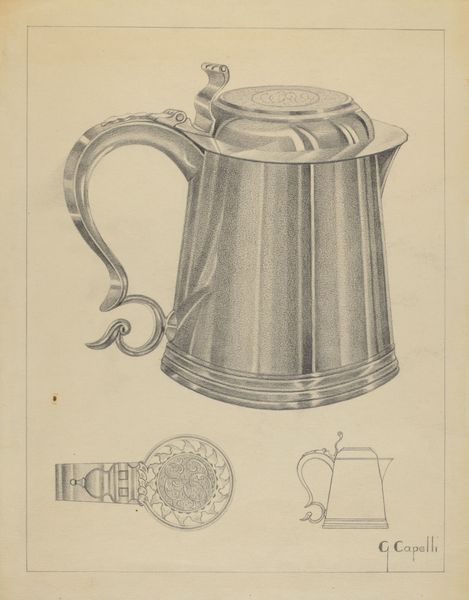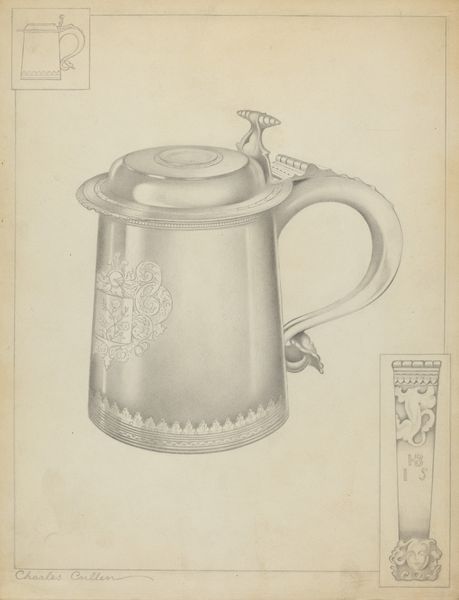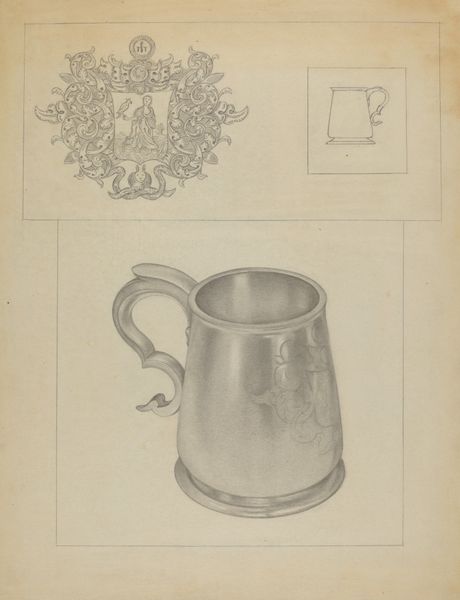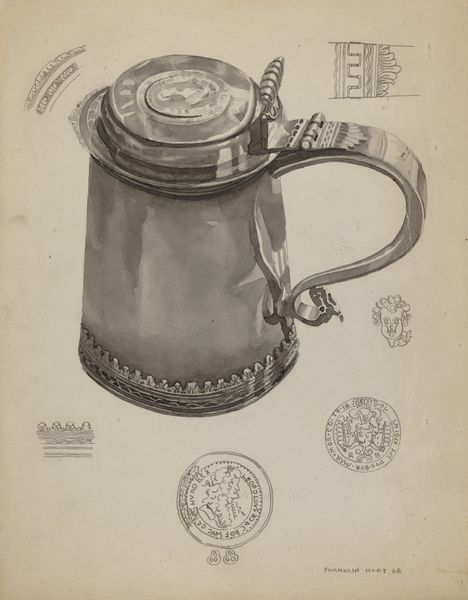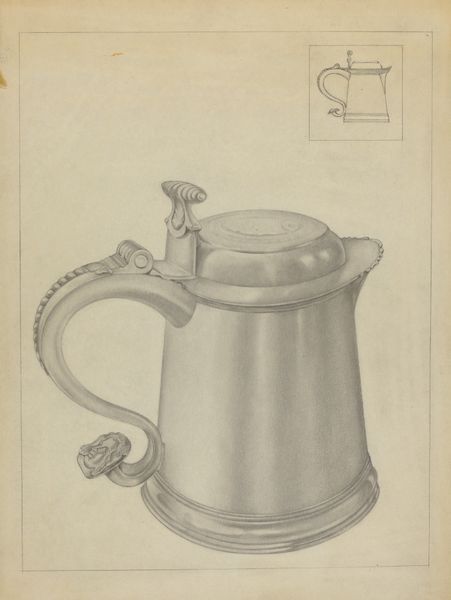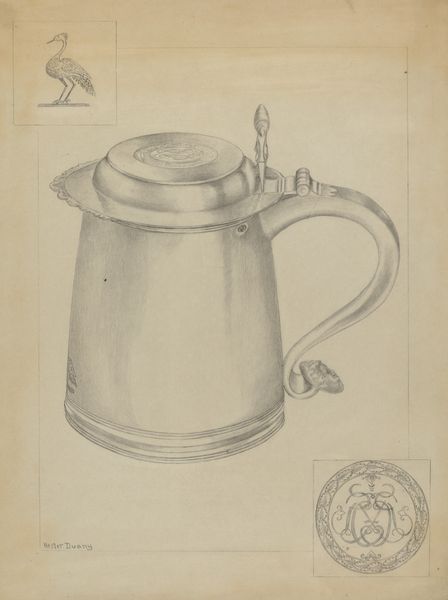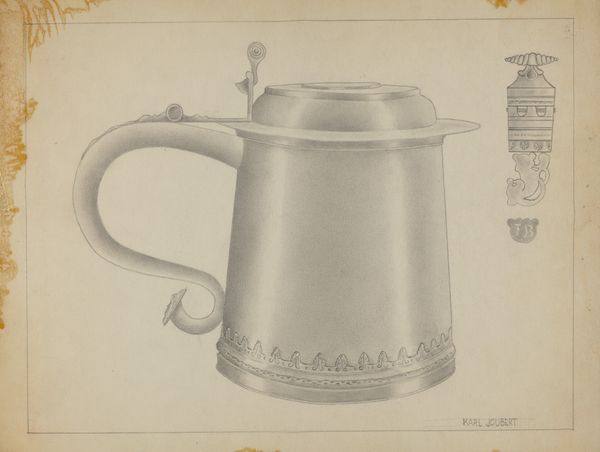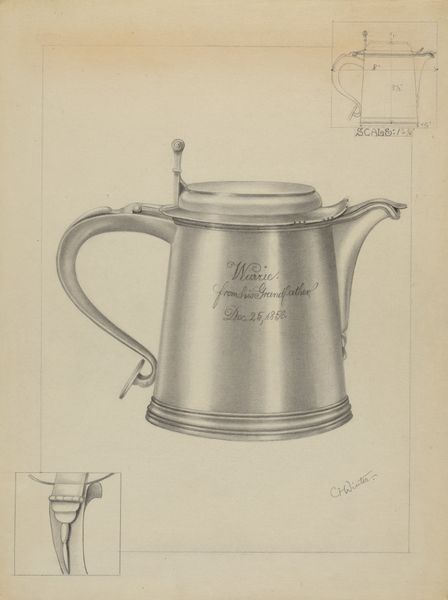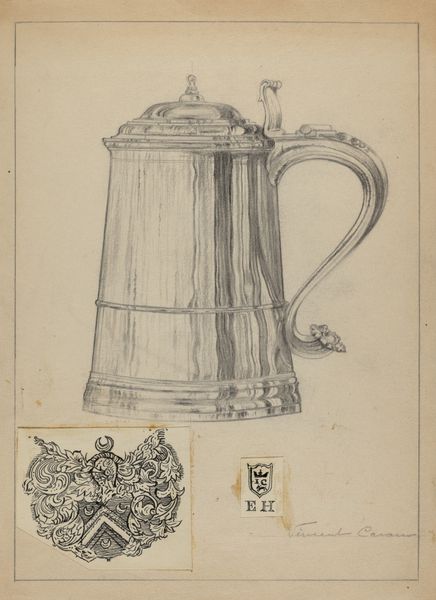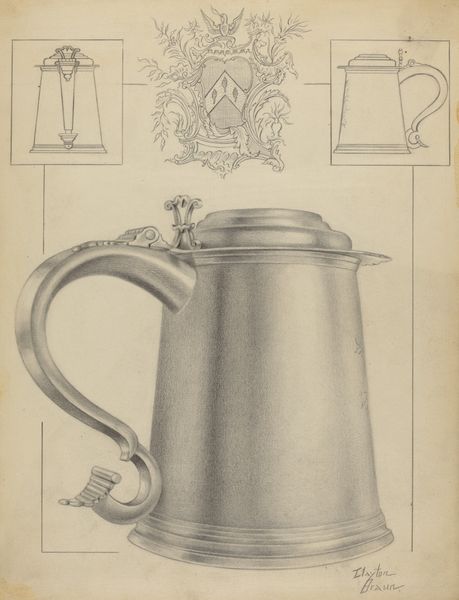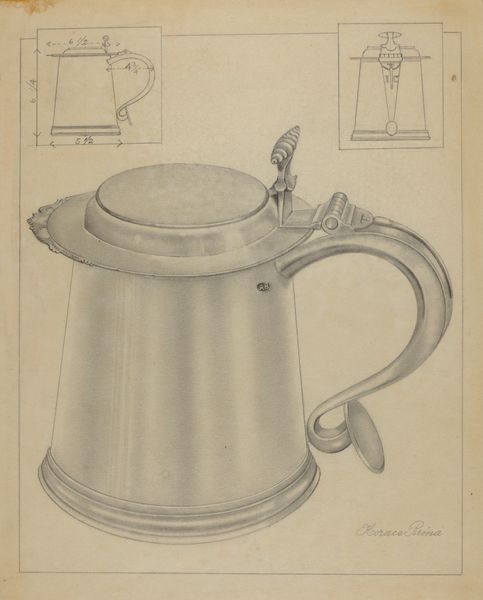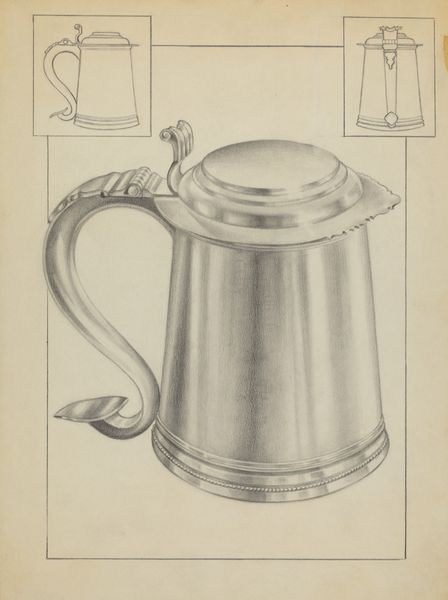
drawing, paper, pencil
#
drawing
#
paper
#
pencil
#
realism
Dimensions: overall: 30.4 x 22.9 cm (11 15/16 x 9 in.) Original IAD Object: 5 7/8" high
Copyright: National Gallery of Art: CC0 1.0
Editor: This is a pencil drawing on paper titled "Silver Tankard," created by Hester Duany between 1935 and 1942. I’m immediately drawn to the way the artist has captured the light reflecting off the metallic surface. It’s almost photorealistic. What do you see in this piece, especially considering the different motifs that surround the tankard itself? Curator: The artist demonstrates a masterful understanding of form through subtle tonal variations. The realism isn't merely mimetic but reveals the inherent geometry and material essence of the tankard. Note the geometric precision within the cylindrical body, a stark contrast with the elaborate curvilinear embellishments on the handle. These textural shifts emphasize volume. The various graphic elements displayed surrounding the central still life suggest a process-based and architectural understanding that transcends typical artistic practices. Can you appreciate the structural dynamic here? Editor: Yes, I see how the contrast between the cylindrical shape of the tankard and the ornate handle creates a dynamic tension. And the placement of the extra motifs *around* the tankard are reminiscent of an architect's working drafts. Almost like preliminary sketches. The flat rendering of the surrounding graphic elements also contrasts with the illusionistic shading of the central element. Curator: Precisely. It eschews conventional illusionistic space in favor of a flat, almost diagrammatic arrangement. We are reminded that the picture plane itself is paramount. There appears to be a deeper, internal logic beyond simple representation here, focusing instead on what an architect or sculptor might think of in preparatory processes. Editor: That’s fascinating. So, instead of just a drawing *of* a silver tankard, it becomes more of a study *about* form, texture, and maybe even the artist's working method. Curator: Indeed. The representational aspects recede, giving way to a more abstract contemplation of volume, shape, and materiality. Editor: I will never look at a pencil drawing the same way. Curator: Nor should you. By concentrating on the artistic practice as evidenced by the object, there is little need for the artist's intentions, and meaning itself is rendered moot.
Comments
No comments
Be the first to comment and join the conversation on the ultimate creative platform.
